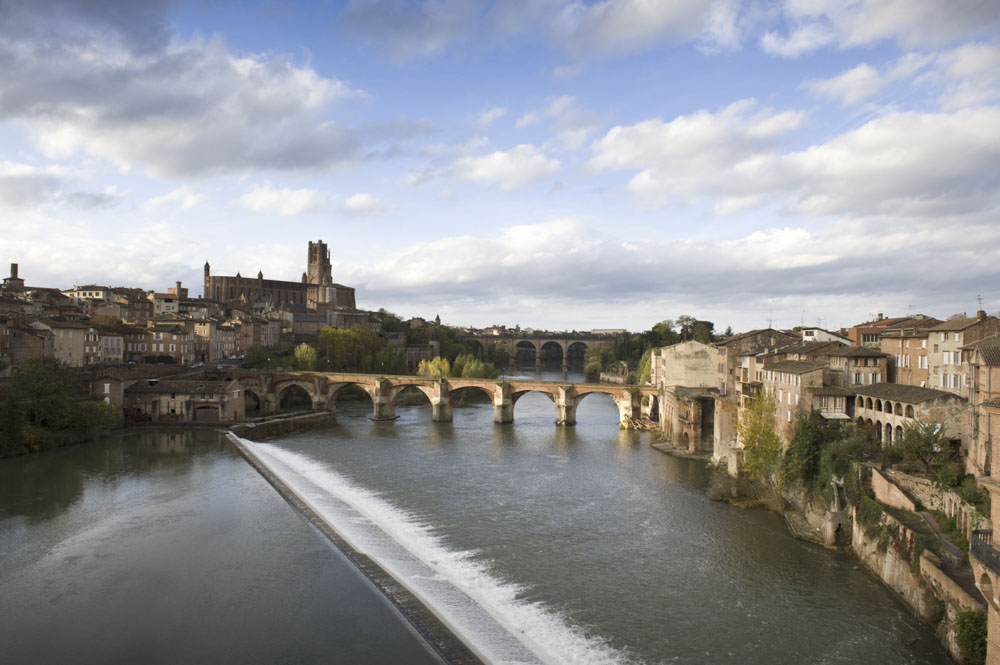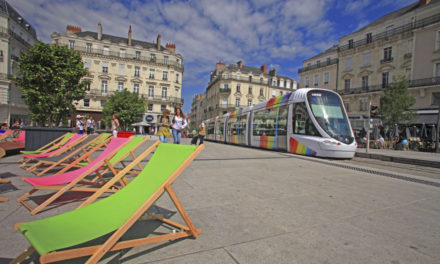
The rose coloured Cathedral city of Albi on the banks of the Tarn owes its colour to the clay from the river bed used to construct the buildings. The impressive Palais de la Berbie, an imposing fortress built by the bishops in the middle ages (Berbie being derived from the Occitan word ‘bisbia ‘ meaning ‘eveque’ or bishop) houses the Toulouse Lautrec museum. The famous artist was born in Albi in 1864 and, thanks to the generosity of his family, the collection includes his posters and lithographs and traces his career from its earliest days to his life in Montmartre where he moved in 1883 and where many of his most famous paintings are set (scenes of cabarets, cafés and concerts and of famous actors and actresses). Here, too, are works by other famous artists including Bonnard, Buillard, Matisse, Utrillo, Vlaminck and Rouaul to mention but a few.
Towns in the Tarn
Book a Hotel in the Tarn
History
Soaring above the town, the Cathedral of St Cecile is a masterpiece of gothic architecture which took over two centuries to complete and is said to be the largest brick building in the world. The austere exterior is indicative of the part it played in defending Christianity against what was seen as the ‘Cathar heresy’. The interior by contrast is pure Italian Renaissance with wonderful frescoes on the arched ceiling, the work of artists from Modena and Bologna in the early 16th century and a collection of over 200 beautiful carved stone figures dating from the middle ages. The 18th century organ, decorated in carved wood is considered to be one of the three finest in France and above it is a vast mural of the Last Judgement painted by Flemish artists in the late 15th century
Castres
The town of Castres, one of the stages of the route to Santiago de Compostela from as early as the 9th century, owes its wealth to the textile industry. Clustered along the banks of the River Agout are the houses of dyers, weavers and tanners as well as paper makers whilst in the Bishop’s Palace which dates from the 17th century, the Goya museum has an outstanding collection of paintings by this artist. In Labruguière you can visit the Arthur Batut museum. In 1888 Batut used a kite to send his camera into the skies and aerial photography was born.
Gaillac
With the Montagnes Noires, the ancient site of the ‘trembling rocks’ at Sidobre, the Parc Regionale, and the vast 3526 hectares of the Grésigne oak forest, the Tarn is a wonderful place for hikers and ramblers. The countryside changes dramatically around the bustling pink market town of Gaillac with its gently rolling vineyards which have for over 1000 years produced delicious AOC red and white wines – the perfect accompaniment to the local fare which features Confit de Canard, Cassoulet and Toulouse sausages amongst other delicious dishes. Mentioned in the testament of Saint Didier, Bishop of Cahors, in 654 A.D, the town began to develop in 972 AD around the Benedictine monastery whose monks were responsible for developing the vineyards which stretch towards the pretty bastide town of Cordes. Other Bastides include Lisle sur Tarn and Castelnau de Montmirail and to the north is the fortified medieval village of Puycelsi.
| Title | Address | Description |
|---|---|---|
TARN | Tarn, France |





